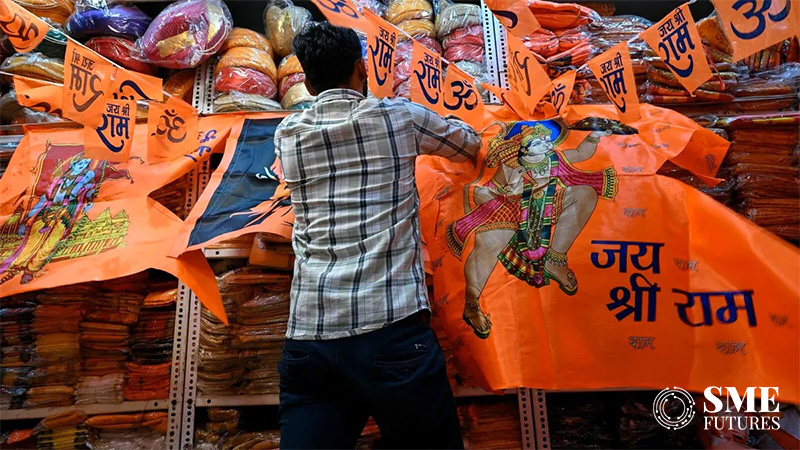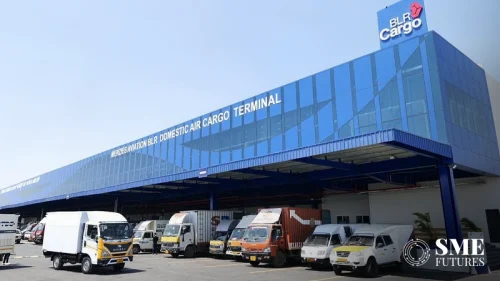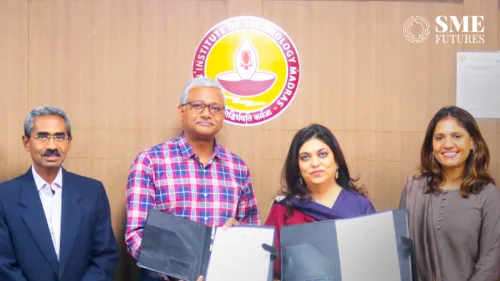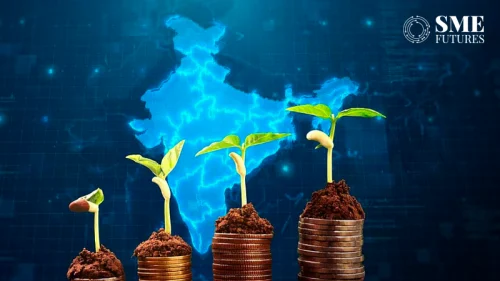The inauguration of the Ram Mandir in Ayodhya has not only marked a historic cultural moment but has also catapulted Micro, Small, and Medium Enterprises (MSMEs) across the country into a new era of economic prosperity.
FIRST India (Forum for Internet Retailers, Sellers & Traders India) reports an extraordinary surge in business opportunities, resulting in a remarkable upsurge in business. FIRST India has also traced the reverse migration of over 170 artisans and 6000+ MSMEs in Retail, Manufacturing and Services, to Ayodhya from other cities.
Ayodhya, now transformed into an economic hub, has attracted investments totaling an astonishing Rs 4-5 lakh crore, promising benefits across various sectors, including manufacturing, services and supply chains. The $10 billion investment-based transformation plan for Ayodhya, is expected to have a positive multiplier effect, strengthening manufacturing and service-oriented MSMEs, and potentially creating employment opportunities for over 10 lakh people annually.
The relentless efforts of the government led by the PM, have fostered an optimistic environment for the city and its businesses, driving economic growth and entrepreneurship. Hospitality Chains, Consumer goods companies and food service chains are strategically expanding their presence in the area, contributing to increased employment opportunities.
Ayodhya’s newfound economic significance is expected to stimulate high growth within a 100-kilometer radius, benefiting a wide range of businesses, including small hotels, homestays, provision and confectionary stores, as well as small food vendors. There’s been an increased demand online for products such as temple miniatures, lanterns, puja samagri, idols, stoles, scarves, shawls, diyas, flags, as well as horticulture items like flowers, bhog and prasad (Sweets), not only in India but also from NRIs all over the world. Utensil and metal craft shops in the city have already reported a threefold surge in their business.
The surge in visiting pilgrims has led to a steep rise in demand for almost every type of goods and services from local businesses. This includes an anticipated boost for the region’s GI tagged product – the famous ‘Kala Namak rice’. This aromatic, black rice variant is traditionally used to prepare prasad offered at the Shree Ram Mandir and has seen a huge demand due to its highly nutritious content and low GI. FIRST India projections indicate that the additional business generated so far has crossed Rs. 55,000 Crores and could head towards Rs. 90,000 crores by the end of the month.
It is clear that this landmark event has created an additional demand almost similar to the festival sales period and a boon for Micro and Small Enterprises.
Vinod Kumar, President, India SME Forum, and Trustee, FIRST India, shared his thoughts on this development, stating, “Over Rs 55,000 crore of trade has happened from January 1 till 26th—all in the micro and small business sector related directly to the Ram Mandir, which has presented a unique opportunity for MSMEs, not only in UP but across the country. As we move forward, it is important that government initiatives help MSMEs scale businesses online through collaborative efforts with ONDC nationally and marketplaces like Amazon and Ebay Internationally, ensuring their continued contribution to the nation’s economic prosperity.”
MSMEs, recognized as pivotal contributors to India’s economic landscape, are strategically utilizing e-commerce platforms and cutting-edge technology. FIRST India’s festive report reveals impressive statistics, with 80 percent of sellers generating revenues from online and e-commerce sales. This success story underscores the collaborative efforts of the government and e-commerce platforms like ONDC, Amazon, Jiomart, empowering MSMEs to expand their market reach, amplify sales, and significantly contribute to India’s overall GDP.











